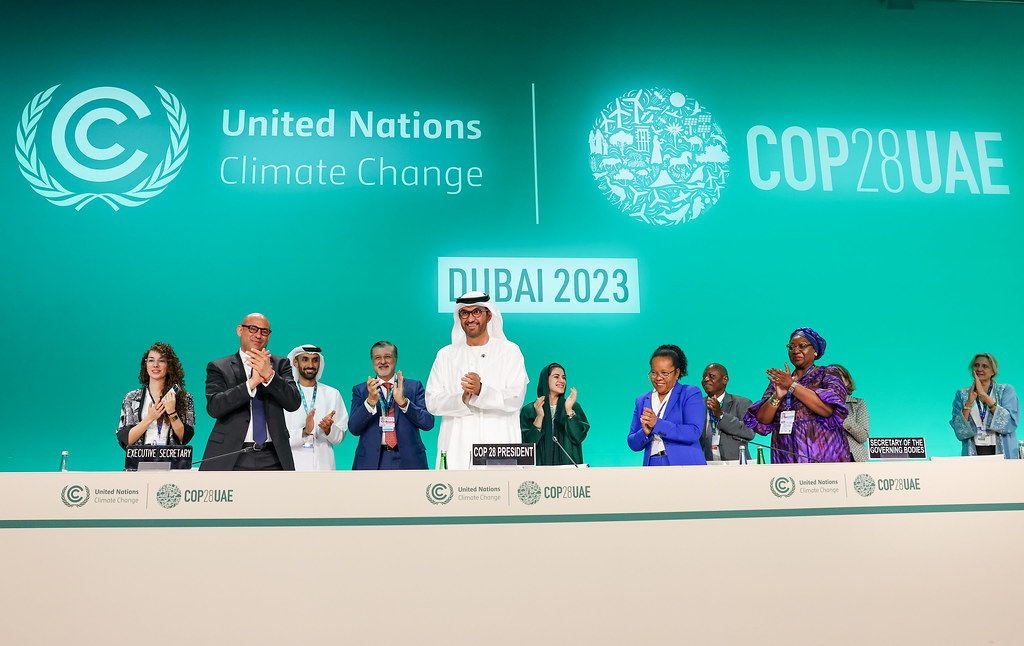COP stands for Conference of the Parties, a (usually annual) meeting of the nearly 200 countries that are party to the United Nations Framework Convention on Climate Change and are committed to reducing these greenhouse gases to prevent global warming. The first COP was held in Berlin in 1995 and now the 28th has begun in Dubai.
To start with, we have already had twenty-eight meetings, and over these years not only has the emission of polluting gases not been reduced (last year they increased by 2% compared to the year 2021) but scientists have confirmed that the summer of 2023 has been the hottest season ever seen in the world (since reliable records have been kept). At first glance, therefore, these meetings seem unproductive, were it not for the hours of news that fill the media for a few days.
I had the opportunity to attend one of these meetings (COP15 in Copenhagen in 2009), and my personal experience is quite disappointing. It is a vanity fair of scientists, politicians and even environmental organisations that are convened once a year in far-flung corners of the globe. To my knowledge, no one has ever bothered to calculate the carbon footprint of the thousands of people, most of them travelling by plane, but perhaps (just perhaps) the conference itself is contrary to its fundamental principles. Another feature of the meeting is that absences are as important, if not more so, than presences; this year in Dubai, China was absent, and the United States was “downgraded”. These two countries account for almost half of global greenhouse gas emissions; if they are not present, any agreement is born with lead under its wing.
Another characteristic of the COPS is that, if there is an agreement, it is always reached at the last minute, when everyone seems more concerned with going home for Christmas than with solving the planet’s problems. And however weak the commitments are (the proof is that, after so many meetings and so many solemn declarations, the Earth’s temperature continues to rise), they are always sold as great progress, with politicians happily hugging each other, even though the numbers are stubborn and, year after year, prove the opposite. Only the Paris Agreement (COP 2015), with the objective of keeping this century’s temperature rise well below 2°C and strengthening the capacity to deal with the impacts of climate change, seemed solid enough.
Everyone agrees only that next year they will meet again, in a place as far away as possible. COP tourism is much more spectacular than Imserso [Spanish Institute for the Elderly and Social Services] tourism, with more exotic destinations; there are real professionals at the event.
I think the Dubai COP was disappointing, although it is not over yet; I hope I am wrong. First of all, the activist Greta Thunberg’s triumphant arrival without using polluting means of transport (as she did at COP 25 in Madrid, crossing the Atlantic in a sailboat and arriving in the Spanish capital by train) was missing.
Holding a meeting to reduce emissions of polluting gases, which mainly come from the use of fossil fuels, in a country whose economy is largely dependent on oil, seemed contradictory.
And the reality has surpassed the worst of the omens: the president of the assembly (Sultan Ahmed al Jaber) has denied climate change in a speech; the religious leaders of the area affirm that “oil is a gift from God and that God is not to be questioned” and, as if that were not enough, Clauser (who is a Nobel Prize winner in Physics) has affirmed these days that the planet is not in danger and defies all the COP’s discourse. In this context, little can be expected from the meeting if the local organisers themselves doubt that it is necessary to eliminate the use of fossil fuels.
Consequently, the question is no longer whether we will be able to comply with the Paris agreements of 2015, but how long we will be able to break them without everything going down the drain.



